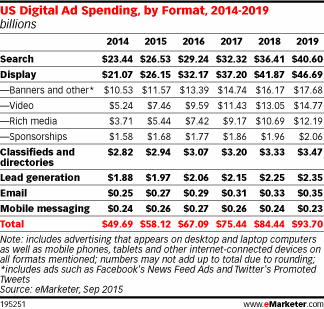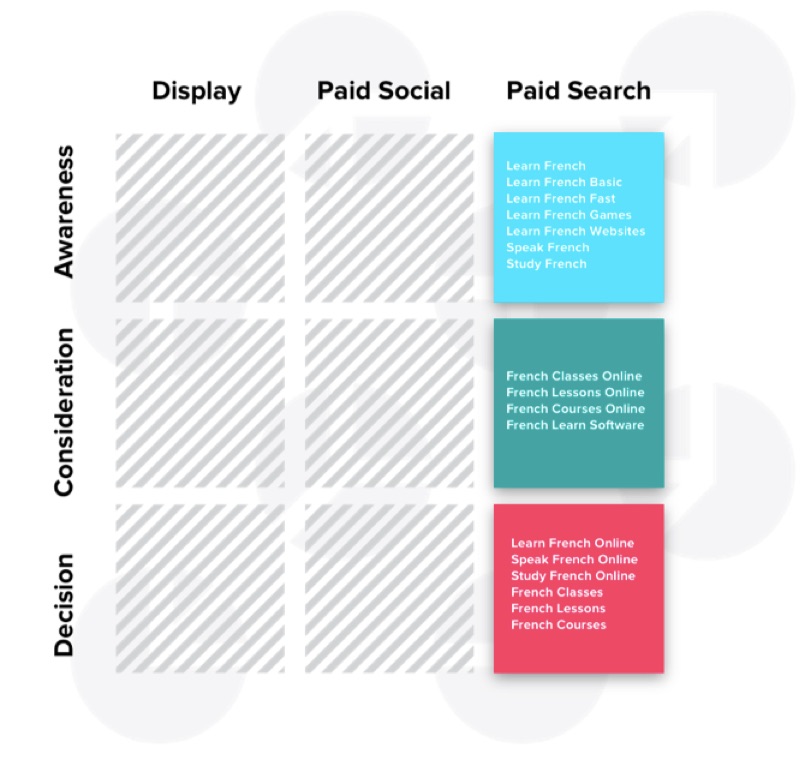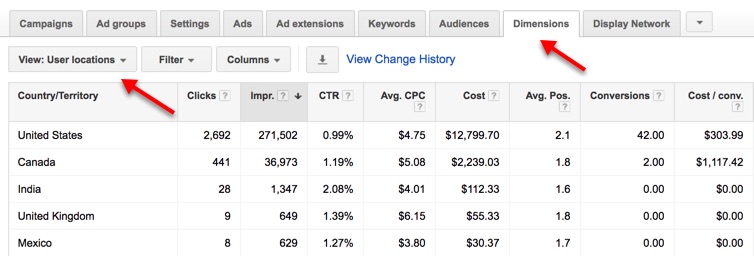Search traffic is growing by a lot. In 2014, marketers spent $23.44 billion in the search channel. That same figure for this year is already $32.32 billion, and it’s expected to reach $40.60 billion by 2019.

Traffic you spend money on directly impacts your ROI. The key to the traffic is that it has to be qualified.
The Same Mistake As Driving a 600HP Beast With Manual Transmission
With the AdWords platform being very complex, it’s easy to make mistakes. If you start making mistakes, your traffic can go from qualified to unqualified.AdWords is a super-powerful advertising platform with lots of manual options. Just like a Porsche 911 Turbo with 600 horses stuffed under the bonnet and a snappy manual transmission.
This car isn’t your ordinary Honda Civic — as much as we’d all love to get behind the wheel of the Porsche, we wouldn’t be doing ourselves any favors by rushing into it.
Without a bit of knowledge, practice, and patience, you might wrap the car around a pole. There’s a whole lot of machine underneath you to control.

Replacing the stick shift, flappy paddles, clutch, and launch control from our Porsche are variables you can (and must) control in order to truly grab the reins, and take command of your advertising campaigns.
To avoid the business equivalent of mishandling your horsepower and wrapping your campaign around a pole, I’d like to point out three huge mistakes you might be making and hurting your ROI with:
- Thinking that your traffic is qualified.
- Not checking if your traffic is qualified.
- Not knowing where to check.
Mistake #1. Your Traffic Is Coming From The Wrong Search Terms
You may have a gap in your intended targeting versus your actual traffic. In most cases, this happens due to a simple misunderstanding of keyword match types. I don’t want to get into the usual, boring old platitudes here (broad, phrase, exact match). Search industry covered it 50,000 times already, and I don’t see a point in beating a dead horse.Instead, I want to clear something up:
Keywords ≠ search terms.
One of my pet peeves is how marketers believe that keywords and search terms are the same thing. Marketers use them interchangeably, but they’re very different. Here’s how I define each:
- Search Term: The exact word or phrase a person uses on the search engine to find what they were looking for (appropriate for all of us).
- Keyword: The word you use to target search terms on paid search platforms (appropriate for marketers).
In the end, think search terms, and not keywords. In other words, consider how your ideal customers use search engines to answer their questions and needs.
What to do about the mistake?
You need to make sure you’re targeting your intended search terms.
Perform the “Search Term Analysis” in your paid search platform. The analysis consists of the following:
- Search terms triggered by keywords.
- An analysis of their relevancy and KPIs.
- Actions you can take (expanding, excluding, changing bids).

Here’s an example report from one of our clients:

- Relevant search terms with good KPIs. I like to use two levels of KPIs: primary (conversions and cost per conversion) and secondary (clicks and CTR). These are opportunities to expand. If these search terms aren’t managed as exact match keywords, add them. You’ll be able to control the bids, and you’ll also be able to improve ad positions, or increase your impression share to get more traffic.
- Relevant search terms with poor KPIs. You have a few options: you can either exclude, or add data as exact-match keywords and wait for statistically significant data.
- Irrelevant search terms you don’t want to target. This is how you exclude a full term entirely. Here’s an example of who might do this, and why — commercial attorneys. If a law firm is focused on commercial work, “pro bono” is not relevant to their business (and may hurt their ROI through wasting ad spend), and needs to be excluded from future targeting endeavors.

Now that we’ve covered that, let’s move on to the next large mistake I see marketers making.
Mistake #2. Your Traffic Is From The Wrong Buyer’s Stages
Let’s say you work for a French language learning company “Le French”. Your company sells “Learn French Fast” online course and offers a free DVD set with the purchase.Your offer is geared for buyers who are ready to make a decision. You’re going after the sale — but buyers aren’t responding to it.
Why? Their intent is not there. It was because your keyword strategy covered all buyer stages for the same offer.
We need to take one step back. Buyers have different stages in the journey. To illustrate the situation, I will focus on three buying stages of “Le French” customers. Here’s a visual of the Buyer Stages concept visualized as something I call the “Paid Media Cube:”

- Awareness. This represents buyers who are still early on in the buying process. They’re looking for ideas, or trying to identify a problem. They’re far from making a decision. Think of people looking for ideas on how best to learn and speak French. They know they have a desire to learn the language, but they’re not quite ready to go after expensive software or coursework quite yet.
- Consideration. This is where buyers are considering potential options. It’s the planning stage — the drawing board. These buyers are not ready to make a decision, but they’re getting warmer. Think of people looking for French language course types, and pricing. They know they want to learn French, and have decided to take a course. They won’t sign on the dotted line yet, but they’re really weighing their options.
- Decision. These are buyers who are ready to make a decision. They’re looking for a solution and are ready to commit. Think of people who are researching a particular French course online and are showing it favor after doing their research.
Traffic from the Awareness and Consideration stages was not relevant. Buyers had a completely different intent, and the offer did not match it.
To sum it up, you can’t expect to flash pricing in front of people who are in the awareness stage and expect them to pony up.
What to do about the mistake?
You need to check if your campaign strategy deliberately represents each buyer stage. You need to either:
- Eliminate or suppress traffic coming from irrelevant buyer stages OR
- Adjust your offers for each respective stage.
- Decision stage with a high buying intent, would have immediate sale objective. Offer an online course with a DVD set would be very appropriate.
- Consideration stage has a medium buying intent. Go for the lead generation objective. As with the above example, educate your leads until they reach the decision stage. Your offer will change. You could offer a free trial of the French course to the Consideration stage buyers.
- Awareness stage has a low buying intent. Go for the lead generation objective. Then, follow up consistently, and educate your leads until they reach the consideration or decision stage. If you don’t, you’ll waste your advertising dollars, and you’ll get poor results. Your offer will be different, too. In this scenario, you could offer a free “French for Beginners” mini-lesson to the Awareness stage buyers.
Let’s take a look at the third and final mistake I see marketers making all too often:
Mistake #3. Your Traffic Is Coming From The Wrong Locations
Rule of thumb: location targeting is somewhat similar to search query targeting.Locations ≠ user locations.
AdWords has different location settings that could cause your ads to trigger in areas you don’t want them to. You could be triggering in three different capacities. They are:
- Physical location
- Location of interest
- Both

The same client was targeting the United States and Canada, but they ended up with traffic from India, the United Kingdom, Mexico, and the Philippines. See the screenshot below for an example of locations this client ended up pulling traffic from:


Get the facts first. Check where your traffic is coming from. You’ll need two reports:
The User Locations Report, which will tell you exactly where the people who saw your ads were located. See the screenshot below for an example:


- Verify this locations in question are part of your paid media strategy.
- Review the KPIs of the locations in question.
- Relevant locations with good KPIs. This is an opportunity to expand. If for example, you unknowingly targeted Mexico, and this location helped you achieve your objectives, add it to your targeting. You’ll be able to control the bids, improve the ad position, and increase impression share to get more traffic, just like the search term analysis we covered earlier.
- Relevant locations with poor KPIs. Here, you can exclude or add specific targeted locations to manage separately while you wait for statistically significant data. Let’s say you’re targeting the United States, particularly Chicago. You’d then add Chicago as a targeted location, so you can manage it separately, and make your decisions after pulling Chicago-specific data.
- Irrelevant locations you don’t want to target. Here’s how you can exclude a location entirely from your campaign. For example, let’s say a client noticed that traffic from India wasn’t relevant, since the client doesn’t do business internationally. Therefore, India would need to be excluded from future targeting efforts.
Read it again, execute, and win.
About the Author: Tom Bukevicius (boo-ka-vicious) is a Principal at SCUBE Marketing, E-Commerce marketing agency delivering results through PPC & CRO. Tom’s motto is “Magic bullets are for losers. Execution is key.” Check out Tom’s new SCUBE Rating self-assessment to improve paid search campaign efficiency.
No comments:
Post a Comment